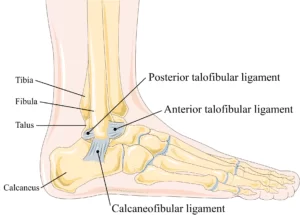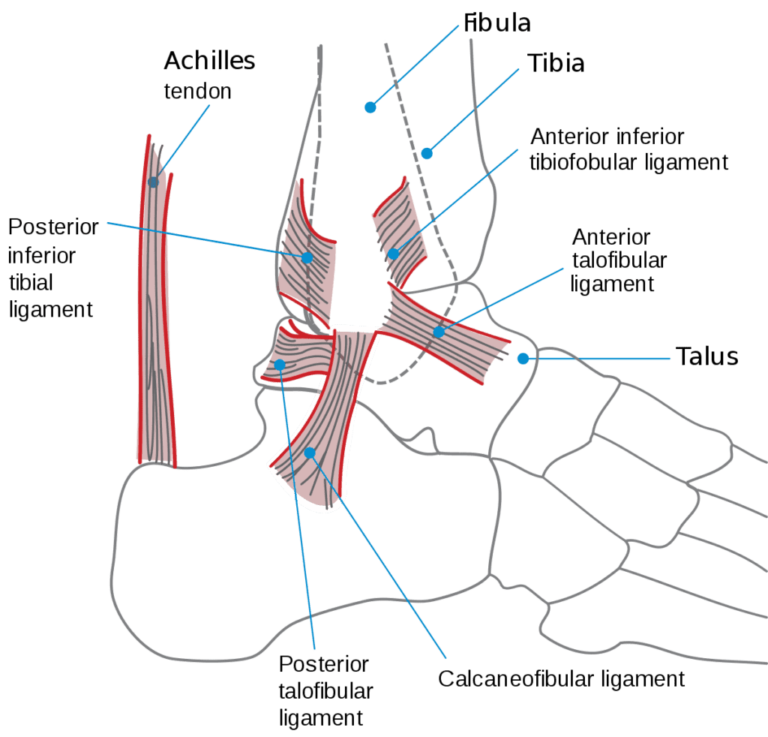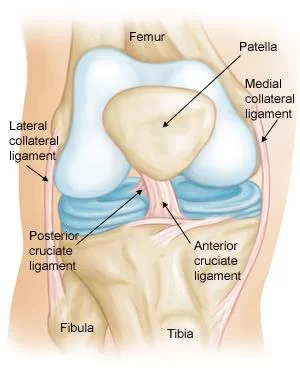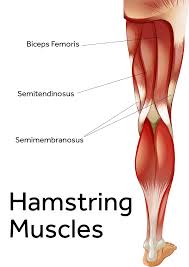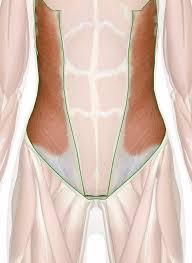Calcaneofibular Ligament
Table of Contents
Introduction
The calcaneofibular ligament is another important ligament in the ankle joint. It connects the fibula bone to the calcaneus bone, which is the heel bone. The calcaneofibular ligament provides lateral stability to the ankle joint and helps prevent excessive inversion or rolling of the ankle.
Like the posterior talofibular ligament, the calcaneofibular ligament can also be injured through twisting or rolling of the ankle, causing pain, swelling, and instability.
Treatment for a calcaneofibular ligament injury may include RICE, immobilization, physical therapy, or surgery depending on the severity of the injury. Proper prevention techniques such as wearing appropriate footwear and using ankle supports during physical activity can also help reduce the risk of a calcaneofibular ligament injury.
Structure of the Calcaneofibular ligament
The calcaneofibular ligament is a strong band of connective tissue that runs from the lateral malleolus of the fibula bone to the lateral surface of the calcaneus bone in the foot. It is one of the three main ligaments that provide stability to the ankle joint, along with the anterior talofibular ligament and the posterior talofibular ligament.
The calcaneofibular ligament is approximately 2-3 cm in length and has a slightly curved shape. It is composed of dense collagen fibers that are arranged in a parallel orientation, which gives it strength and stability.
The ligament is divided into two parts: a superficial part and a deep part. The surface part is located on the outside of the ankle and is responsible for providing stability during plantar flexion (pointing the toes downward) and inversion (rolling the ankle outward). The deep part is located deeper within the ankle joint and provides stability during dorsiflexion (lifting the toes upward) and inversion.
The calcaneofibular ligament is also attached to other structures within the ankle joint, including the lateral talocalcaneal ligament, the lateral talocalcaneal interosseous ligament, and the lateral talocalcaneal articulation.
Attachment of the Calcaneofibular ligament
The calcaneofibular ligament is attached to two bones in the ankle joint: the lateral malleolus of the fibula bone and the lateral surface of the calcaneus bone.
The lateral malleolus is a bony protrusion located on the outer side of the ankle, which is part of the fibula bone. The calcaneofibular ligament attaches to the lateral malleolus at its base, which is where the bone meets the ankle joint.
The calcaneus bone is the largest bone in the foot and forms the heel. The calcaneofibular ligament attaches to the lateral surface of the calcaneus bone, which is the outer side of the bone that faces away from the midline of the body. The attachment site is located near the back of the heel, close to where the Achilles tendon inserts into the bone.
In addition to these two bones, the calcaneofibular ligament is also attached to other structures within the ankle joint. These include the lateral talocalcaneal ligament, which connects the talus bone to the calcaneus bone, and the lateral talocalcaneal interosseous ligament, which connects the talus bone to the fibula bone. The ligament also attaches to the lateral talocalcaneal articulation, which is the joint between the talus and calcaneus bones.
The attachment of the calcaneofibular ligament to these various structures helps to provide stability and support to the ankle joint during movement. When one of these attachments is disrupted due to injury or trauma, it can result in pain, swelling, and instability in the ankle joint.
Functions of the Calcaneofibular ligament
The calcaneofibular ligament plays an important role in stabilizing the ankle joint and preventing excessive movement or rotation of the foot. Some of the key functions of this ligament include:
- Restricting inversion: The calcaneofibular ligament helps to prevent excessive inward rolling of the foot, which is known as inversion. This is a common mechanism of injury in ankle sprains, and the ligament helps to limit the amount of inversion that can occur.
- Supporting lateral stability: The lateral side of the ankle joint is particularly vulnerable to injury, as it is less stable than the medial side. The calcaneofibular ligament provides lateral stability to the ankle joint, helping to prevent excessive movement or rotation.
- Assisting with dorsiflexion: Dorsiflexion is the movement of the foot upwards towards the shin. The calcaneofibular ligament helps to support this movement by providing tension and stability to the ankle joint.
- Maintaining joint alignment: The ligament also helps to maintain proper alignment between the fibula and calcaneus bones, which is important for overall joint health and function.
Overall, the calcaneofibular ligament is an important component of ankle joint stability and function. When this ligament is injured or damaged, it can result in instability, pain, and decreased mobility in the ankle joint.
Blood supply of the Calcaneofibular ligament
The calcaneofibular ligament is a strong, fibrous band that connects the calcaneus (heel bone) to the fibula (one of the two bones in the lower leg). It is an important stabilizer of the ankle joint and helps to prevent excessive lateral (outward) movement of the foot.
The blood supply to the calcaneofibular ligament comes from several sources. The most important of these is the peroneal artery, which is a branch of the posterior tibial artery. This artery runs down the back of the leg and supplies blood to the muscles and other tissues in the lower leg and foot.
In addition to the peroneal artery, there are also smaller blood vessels that supply the calcaneofibular ligament. These include branches of the lateral malleolar artery and the anterior tibial artery. These arteries run along the outside and front of the ankle joint, respectively, and provide additional blood flow to the ligament.
The blood supply to the calcaneofibular ligament is important for maintaining its health and function. Without adequate blood flow, the ligament may become weakened or damaged, which can lead to instability and pain in the ankle joint. Injuries to the ligament, such as sprains or tears, can also disrupt its blood supply and further compromise its function.
Injuries of the Calcaneofibular ligament
The calcaneofibular ligament can be injured in a variety of ways, but the most common cause is an ankle sprain. An ankle sprain occurs when the foot twists or rolls inwards, causing the ligaments on the outside of the ankle to stretch or tear. This injury can be done during activities such as:
- Sports: Activities that involve sudden changes in direction, jumping, or landing, such as basketball, soccer, or volleyball, can put a lot of stress on the ankle joint and increase the risk of an ankle sprain.
- Running: Running on uneven surfaces or wearing improper footwear can also increase the risk of an ankle sprain and damage to the calcaneofibular ligament.
- Accidents: Tripping, falling, or twisting the ankle in an accident can also cause an ankle sprain and damage to the ligament.
- High heels: Wearing high heels can put a lot of pressure on the ankle joint and increase the risk of an ankle sprain and damage to the ligament.
Symptoms
Symptoms of a calcaneofibular ligament injury can vary in severity depending on the extent of the damage. Some common symptoms include:
- Pain: Pain is the most common symptom of a calcaneofibular ligament injury. The pain may get sharp or dull and may worsen with motion or pressure.
- Swelling: Swelling around the ankle joint is another common symptom of a ligament injury. The swelling may be mild or severe and can make it difficult to move the affected foot.
- Bruising: Bruising around the ankle joint is also common with a ligament injury. The bruising may be mild or severe and can take some days to seem.
- Difficulty walking: A ligament injury can make it difficult to walk or bear weight on the affected foot. This may be due to pain, swelling, or instability in the ankle joint.
- Instability: An injury to the calcaneofibular ligament can cause instability in the ankle joint, making it feel wobbly or loose. This can make it very difficult to walk or do activities that need balance.
f you feel any of these symptoms after an ankle injury, it is very necessary to take medical attention. Your doctor can evaluate the extent of the damage and recommend appropriate treatment to help you recover.
Diagnosis of the Calcaneofibular ligament
The calcaneofibular ligament is a band of tissue that connects the fibula bone to the heel bone (calcaneus) in the ankle joint. This ligament is responsible for providing stability to the ankle joint and preventing excessive inward rolling of the foot.
A diagnosis of a calcaneofibular ligament injury typically begins with a physical examination by a healthcare professional. During the exam, the doctor will assess the ankle for signs of pain, swelling, bruising, and instability. They may also perform specific tests to evaluate the strength and range of motion of the ankle joint.
In some cases, imaging tests such as X-rays, MRI, or CT scans may be ordered to confirm the diagnosis and assess the extent of the damage to the ligament. These tests can help determine if there are any associated fractures or other injuries to the ankle joint.
Once a diagnosis of a calcaneofibular ligament injury is confirmed, treatment options will depend on the severity of the injury. Mild injuries may be treated with rest, ice, compression, and elevation (RICE) therapy, along with over-the-counter pain relievers. More severe injuries may require immobilization with a brace or cast, physical therapy, and in some cases, surgery.
Overall, early diagnosis and treatment of a calcaneofibular ligament injury can help prevent further damage to the ankle joint and promote a faster recovery. If you suspect you have injured your ankle or are experiencing any symptoms of a ligament injury, it is important to seek medical attention promptly.
Treatment of the Calcaneofibular ligament
The medial talar tilt test
The medial talar tilt test, also known as the inversion stress test, is a physical examination technique used to assess the stability of the ankle joint, specifically the calcaneofibular ligament. This ligament connects the fibula bone to the calcaneus bone on the outside of the ankle and is often injured in ankle sprains.
During the medial talar tilt test for the calcaneofibular ligament, the patient lies on their back with their foot hanging off the edge of the examination table. The examiner stabilizes the lower leg with one hand while using the other hand to grasp the heel and apply a lateral force to the foot. The foot is then tilted inward (inversion) and outward (eversion) to assess the amount of movement and stability in the ankle joint.
The amount of tilt is measured in degrees using a goniometer, which is a tool used to measure joint angles. A normal ankle joint should have minimal movement during the medial talar tilt test, with a maximum inversion angle of 5 degrees and a maximum eversion angle of 5-10 degrees.
If the ankle joint has excessive movement or instability during the medial talar tilt test, this may indicate a calcaneofibular ligament injury or other damage to the ankle joint. Further diagnostic tests, such as imaging studies or additional physical examinations, may be needed to confirm the diagnosis and determine the appropriate treatment plan.
Overall, the medial talar tilt test for the calcaneofibular ligament is a simple and non-invasive technique that can provide valuable information about the stability of the ankle joint and help guide treatment decisions for patients with ankle injuries or chronic ankle instability.
Conservative treatment
Conservative treatment for calcaneofibular ligament (CFL) injuries typically involves a combination of rest, ice, compression, and elevation (RICE) to reduce pain and swelling. The following are some specific conservative treatment options for calcaneofibular ligament injuries:
- Immobilization: In some cases, immobilization of the ankle joint with a brace or cast may be necessary to allow the calcaneofibular ligament to heal properly. This can help prevent further damage to the ligament and promote healing.
- Physical therapy: Once pain and swelling have subsided, physical therapy may be recommended to help restore strength, flexibility, and range of motion in the ankle joint. This may include exercises to strengthen the muscles around the ankle, as well as stretching and range-of-motion exercises.
- Nonsteroidal anti-inflammatory drugs (NSAIDs): Over-the-counter NSAIDs such as ibuprofen or naproxen can help reduce pain and inflammation associated with calcaneofibular ligament injuries.
- Rest and ice: Resting the affected ankle and application of ice to the area can help in reducing pain and swelling. Ice should be applied for 15-20 minutes at a time, several times a day, for the first few days after the injury.
- Compression: Compression with an elastic bandage or brace can help reduce swelling and support the ankle joint.
- Elevation: Elevating the affected ankle above heart level can help reduce swelling and improve blood flow to the area.
It is very crucial to take in mind that conservative treatment may not be appropriate for all calcaneofibular ligament injuries, especially those that are severe or involve other structures in the ankle joint. In some conditions, surgery may be needed to repair or reconstruct the damaged ligament. It is very crucial to consult with a healthcare provider to identify the best course of treatment for each individual condition.
Physiotherapy treatment
Physiotherapy treatment for calcaneofibular ligament (CFL) injuries typically involves a combination of exercises and manual therapy techniques to promote healing, reduce pain and swelling, and restore function to the ankle joint. The following are some specific physiotherapy treatments for calcaneofibular ligament injuries:
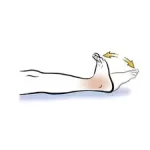
Range of motion exercises: Range of motion exercises are designed to improve the flexibility of the ankle joint. This may include exercises such as ankle circles or ankle pumps.
Strengthening exercises: Strengthening exercises are designed to improve the strength of the muscles around the ankle joint. This may include exercises such as calf raises or ankle dorsiflexion exercises.

Balance and proprioception training: Balance and proprioception training is designed to improve the ability of the ankle joint to maintain stability and balance. This may include exercises such as single-leg balance or wobble board exercises.
Manual therapy: Manual therapy techniques such as massage, joint mobilization, or soft tissue mobilization may be used to help reduce pain and improve the range of motion in the ankle joint.
Electrical stimulation: Electrical stimulation may be used to help reduce pain and promote healing in the affected area.
Taping or bracing: Taping or bracing may be used to provide support and stability to the ankle joint during activities that may aggravate the injury.
Overall, physiotherapy treatment for calcaneofibular ligament injuries is designed to promote healing, reduce pain and swelling, and restore function to the ankle joint. It is important to work with a qualified healthcare professional to develop an individualized treatment plan that is tailored to your specific needs and goals.
Risk factors of the calcaneofibular ligament
The calcaneofibular ligament (CFL) is a band of tissue that connects the fibula bone to the heel bone (calcaneus) in the ankle joint. calcaneofibular ligament injuries can occur due to a variety of risk factors, including:
- Ankle sprains: Ankle sprains are the most common cause of calcaneofibular ligament injuries. They happen when the ankle twists or turns above its normal range of motion, causing damage to the ligaments.
- Sports activities: Sports that involve jumping, running, or sudden changes in direction can increase the risk of calcaneofibular ligament injuries. Examples include basketball, soccer, and tennis.
- Previous ankle injuries: People who have previously injured their ankle are at a higher risk of developing calcaneofibular ligament injuries. This is because previous injuries can weaken the ligaments and make them more susceptible to damage.
- Poor footwear: Wearing shoes that do not provide adequate support or stability can increase the risk of ankle injuries, including calcaneofibular ligament injuries.
- Anatomical factors: Certain anatomical factors, such as a high arch or flat feet, can increase the risk of calcaneofibular ligament injuries by altering the way weight is distributed across the foot and ankle.
- Age: As people age, their ligaments become less elastic and more prone to injury. This can increase the risk of calcaneofibular ligament injuries in older adults.
- Obesity: Excess weight puts extra stress on the ankle joint, increasing the risk of injury to the ligaments.
Overall, there are several risk factors that can increase the likelihood of developing a CFL injury. It is important to be aware of these risk factors and take steps to reduce your risk, such as wearing appropriate footwear and participating in activities that strengthen the muscles around the ankle joint.
How to prevent injuries of the calcaneofibular ligament
Preventing calcaneofibular ligament (CFL) injuries involves taking steps to reduce the risk factors that can lead to these injuries. Here are some ways to prevent calcaneofibular ligament injuries:
- Wear appropriate footwear: Protecting your ankles by donning shoes that offer sufficient stability and support might assist you avoid suffering calcaneofibular ligament problems. Look for shoes with good arch support, a firm heel counter, and a non-slip sole.
- Strengthen the muscles around the ankle joint: Strong muscles can help support the ankle joint and reduce the risk of injury. Exercises that target the calf, ankle, and foot muscles can be helpful. Calf lifts, ankle circles, and toe curls are a few examples.
- Maintain a healthy weight: Excess weight puts extra stress on the ankle joint, increasing the risk of injury to the ligaments. Maintaining a healthy weight can help in reducing this risk.
- Warm up before physical activity: Before engaging in physical activity, it is important to warm up the muscles and joints. Injuries may be prevented as a result of this.
- Practice proper technique: When participating in sports or other physical activities, it is important to use proper technique to avoid twisting or turning the ankle beyond its normal range of motion.
- Rest and recover after injury: If you have previously injured your ankle, it is important to rest and allow it to fully heal before returning to physical activity. Rushing back too soon can raise the risk of re-injury.
- Consider ankle braces or supports: Ankle braces or supports can provide additional support and stability to the ankle joint, reducing the risk of injury.
In summary, preventing calcaneofibular ligament injuries involves taking steps to reduce the risk factors that can lead to these injuries. Wearing appropriate footwear, strengthening the muscles around the ankle joint, maintaining a healthy weight, warming up before physical activity, practicing proper technique, resting and recovering after an injury, and considering ankle braces or supports can all be helpful in preventing CFL injuries.
FAQ
The calcaneofibular ligament (CFL) is a ligament in the ankle that connects the fibula bone to the heel bone.
calcaneofibular ligament injuries are often caused by twisting or rolling the ankle, which can stretch or tear the ligament.
Symptoms of a calcaneofibular ligament injury may include pain, swelling, bruising, and difficulty walking or bearing weight on the affected ankle.
Recovery time for a calcaneofibular ligament injury can vary depending on the severity of the injury. Mild injuries may heal within a few weeks, while more severe injuries may take several months in order to fully heal.
Yes, calcaneofibular ligament injuries can be prevented by taking steps to reduce the risk factors that can lead to these injuries, such as wearing appropriate footwear, strengthening the muscles around the ankle joint, and practicing proper technique during physical activity.
The function of the calcaneofibular ligament is to provide stability to the ankle joint by connecting the fibula bone to the heel bone.
A calcaneofibular ligament injury is typically diagnosed through a physical exam, medical history, and imaging tests such as X-rays or MRI.
Treatment for a calcaneofibular ligament injury may include rest, ice, compression, elevation, pain medication, physical therapy, and in severe cases, surgery.
Yes, if a calcaneofibular ligament injury is not properly treated and rehabilitated, it can lead to chronic ankle instability and an increased risk of future ankle sprains.
Yes, calcaneofibular ligament injuries are one of the most common types of ankle injuries, especially in sports that involve jumping, running, or sudden changes in direction.

